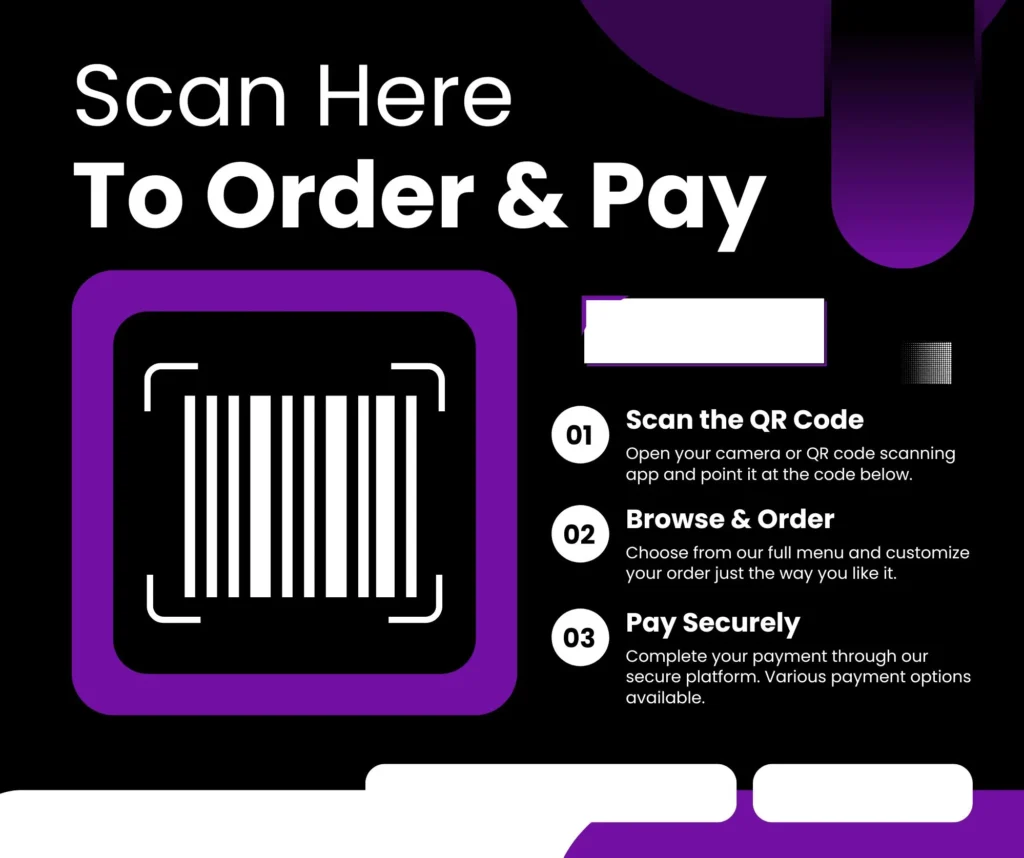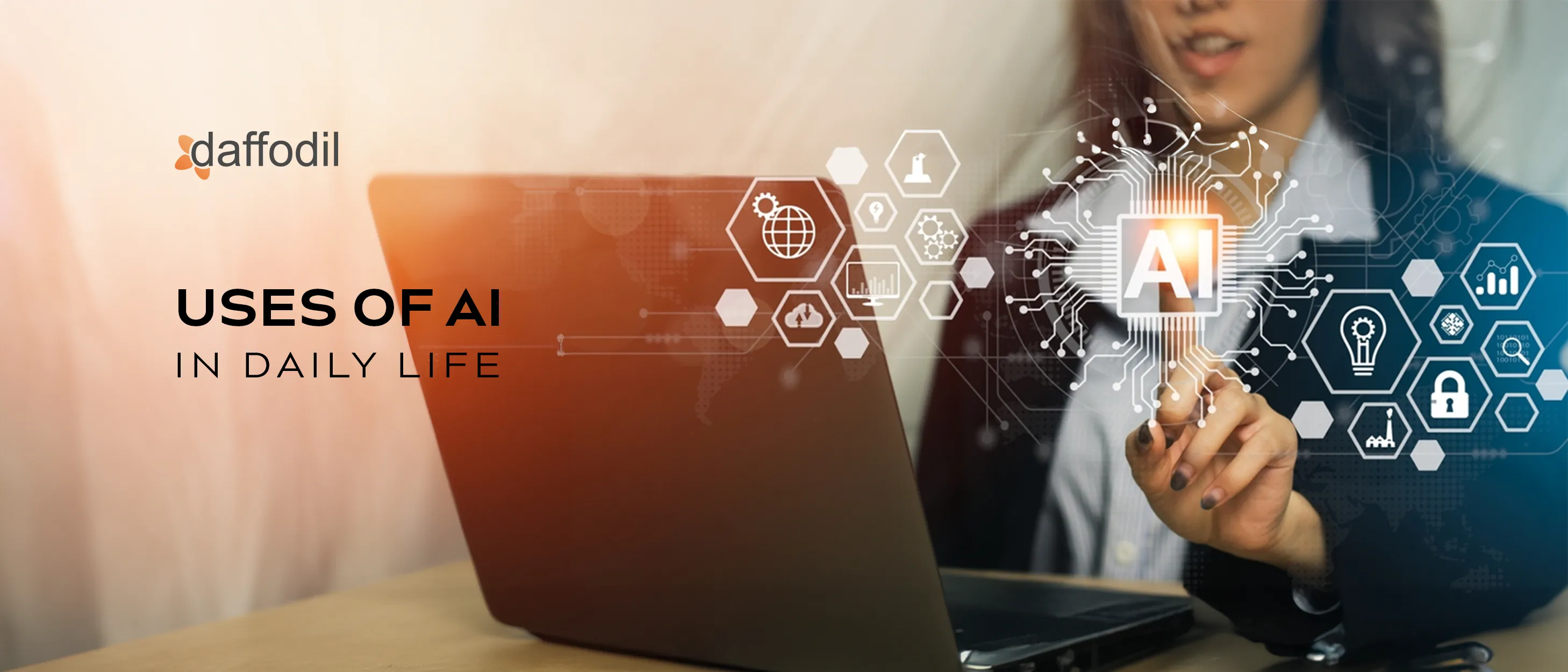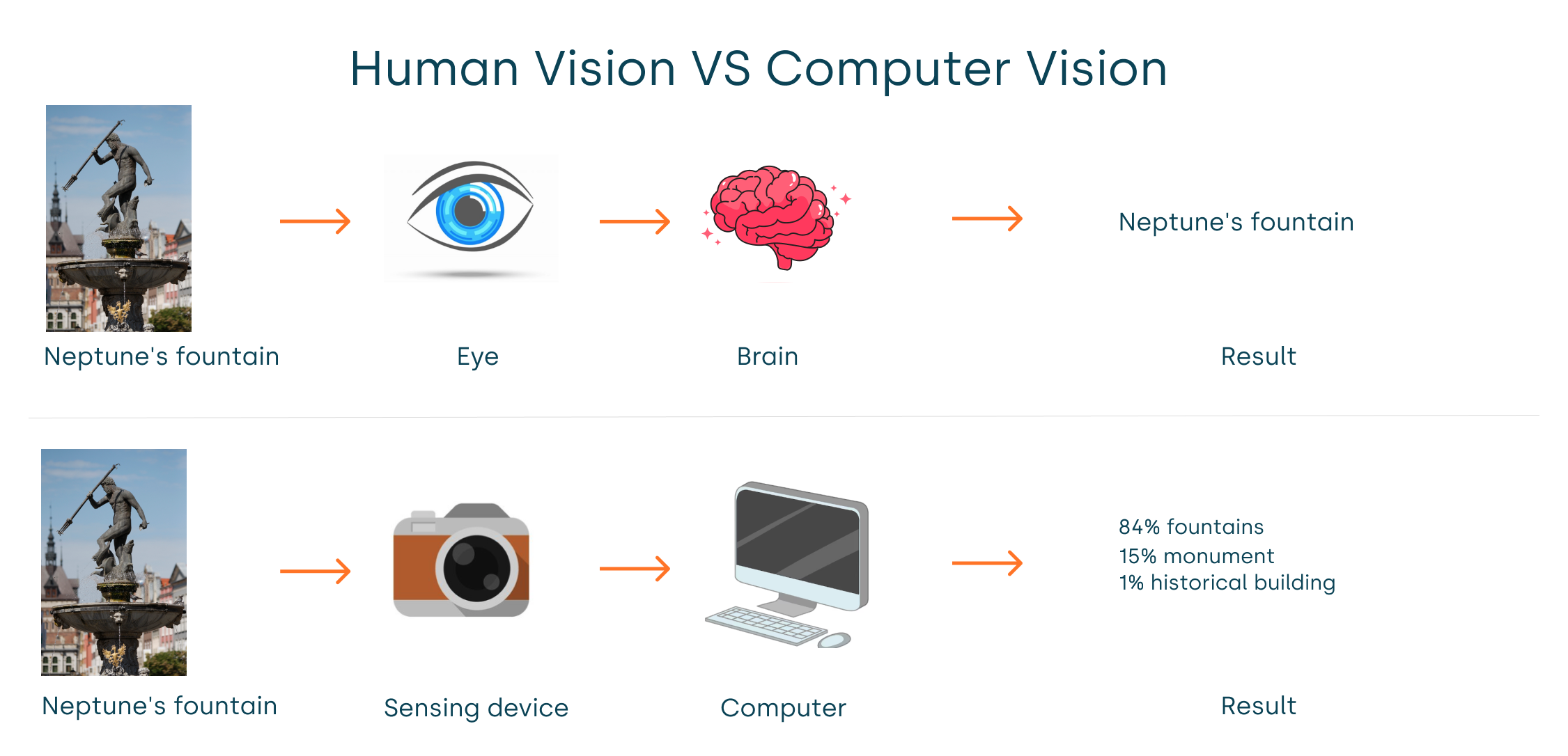OCR technology, or Optical Character Recognition, is changing how we interact with the world. It allows machines to read and convert various types of documents into editable and searchable data.
This tool isn’t just for tech experts. It helps people in simple, everyday ways. You can use it to scan receipts, turn notes into text, or save time at work. OCR Technology in daily life makes things easier and faster. It cuts down on paper, helps with organizing, and is useful for both people and businesses.
Imagine getting details from a document without typing it all. That’s what OCR does. It helps in hospitals, schools, offices, and more. Let’s see how it works in real life.
Ocr In Personal Productivity
OCR helps you get more done with less effort. It makes hard tasks easy. Here’s how it helps in your daily life.
Scanning Handwritten Notes
If you take notes by hand, they can be hard to keep track of. OCR scans these notes and turns them into digital text. This means you can search, copy, and use the notes easily.
With all your notes in one place, nothing gets lost. You can check them on your phone, tablet, or computer anytime.
Digitizing Printed Documents
Paper documents can take up space and get lost. OCR helps you scan bills, reports, or letters. It turns them into digital files you can search.
This saves space and keeps your documents safe. It also helps you share files quickly with others.
OCR helps you stay organized and focus on your goals.
Simplifying Business Processes
Work can be busy and full of paperwork. OCR in daily life makes work faster and simpler
Automating Data Entry
Data entry can be a significant drain on time and resources. OCR technology automates this process, transforming printed documents into digital data seamlessly. Think about the hours spent entering information from forms or surveys. With OCR, you can scan these documents, and the software will extract the necessary information for you.
Imagine a small business owner who used to spend hours each week inputting customer orders. After implementing OCR, that time was reduced to just a few minutes. This not only saved time but also minimized human errors, leading to more accurate records.
Processing Invoices And Receipts
Invoices and receipts can pile up quickly, creating chaos in your accounting department. OCR technology simplifies processing by automatically extracting essential data from these documents. You can set your system to recognize key fields, such as totals, dates, and vendor information.

This automation also ensures timely payments. No more late fees or missed deadlines. You can now focus on strategic financial planning instead of getting bogged down in paperwork.
Have you considered how much time your team spends on these tasks? With OCR, your business can streamline operations and boost productivity. This technology isn’t just a convenience—it’s a game changer for your daily workflow.
Enhancing Accessibility
OCR technology plays a vital role in enhancing accessibility for everyone. It helps break down barriers. People with disabilities can access information more easily. This technology transforms how we read and understand text.
One significant benefit of OCR is its ability to convert printed content into digital formats. This capability makes information available to a wider audience. It supports those with visual impairments and other reading difficulties.
Converting Books To Audio
Many people love listening to books. OCR technology makes this possible. It scans printed books and converts them into audio files. Users can enjoy literature in a new way.
This process starts with scanning each page. The OCR software then recognizes the text. Finally, it reads the text aloud using speech synthesis. This method allows readers to absorb information while multitasking.
Making Text Readable For The Visually Impaired
OCR technology significantly benefits the visually impaired. It turns printed text into formats they can use. This includes Braille and audio formats. This change opens up a world of information.
Special devices can read the scanned text aloud. This allows users to access newspapers, documents, and books. Accessibility ensures everyone has equal opportunities to learn and enjoy content.
With OCR, information is no longer limited to print. It transforms lives by making knowledge more accessible. Everyone deserves the chance to explore and learn.
Improving Travel Experiences
OCR technology enhances travel in many ways. It simplifies processes. Travelers can navigate new places more easily. It removes language barriers. This technology makes trips smoother and more enjoyable.
Passport And Id Recognition
OCR technology speeds up passport and ID checks. Airports use it to scan documents quickly. Travelers no longer wait in long lines. This process is fast and accurate. It reduces human error during checks. Passengers feel more secure knowing their IDs are verified.
Many apps use OCR to help travelers. They scan IDs and confirm identities. This makes boarding simpler. Less time is spent at checkpoints. More time is available to explore.
Real-time Translation Of Signs
Reading foreign signs can be difficult. OCR technology solves this problem. It translates signs in real-time. Travelers can understand directions and warnings instantly.
Mobile apps use OCR for translation. Users take a photo of a sign. The app translates it to their language. This feature helps in unfamiliar areas. It allows travelers to enjoy their journeys without confusion.
Boosting Security Measures
OCR technology plays a vital role in enhancing security in our daily lives. It simplifies the process of identifying and verifying crucial information. With its ability to read and process text from images, it ensures quick and accurate data handling. This capability is essential for various security measures.
Identifying License Plates
License plate recognition is a key application of OCR technology. Cameras equipped with OCR can scan vehicles on the road. They capture the license plate numbers in real-time. This helps law enforcement agencies monitor traffic effectively.
In parking facilities, OCR systems automate entry and exit. They read plates to grant access without manual checks. This speeds up the process and reduces human error. Secure locations benefit from this technology to enhance safety.
Verifying Digital Signatures
OCR Technology is also used to verify digital signatures. This process ensures that documents are authentic. OCR scans signatures and compares them with stored data. It can detect forgery attempts, protecting sensitive information.
In financial transactions, digital signature verification is crucial. It confirms the identity of the signer. This reduces fraud and builds trust in electronic communications. Businesses rely on OCR to maintain security in their operations.
Streamlining Healthcare Operations
OCR technology plays a vital role in healthcare. It simplifies various tasks. This efficiency helps healthcare providers focus on patient care. From managing records to handling prescriptions, OCR enhances operations.
Digitizing Medical Records
Medical records are essential for patient care. OCR helps convert paper records into digital files. This process saves time and reduces errors. Staff can easily access and update records. Patients benefit from quicker and more accurate information.
Digitized records improve data sharing. Healthcare providers can collaborate better. This leads to enhanced treatment plans. Accurate records also support billing and insurance processes.
Processing Prescriptions
OCR technology streamlines prescription management. It scans handwritten prescriptions and converts them into digital formats. This ensures accuracy and reduces mistakes.
Pharmacies can quickly process prescriptions. Patients receive their medications faster. Automated systems also help track prescriptions. This minimizes the risk of lost or misfiled documents.
Supporting Education
OCR technology plays a vital role in education. It helps students and teachers access information easily. With its ability to convert text, studying becomes simpler and more efficient.
Extracting Text From Study Materials
Students often use textbooks and printed materials. OCR technology can extract text from these resources. This makes it easy to create digital notes.
By scanning pages, students can convert them into editable formats. They can highlight important points or summarize chapters. This method saves time and enhances learning.
Converting Handwritten Assignments
Many students write notes and assignments by hand. OCR can convert these handwritten texts into digital form. It ensures clarity and preserves the original ideas.
Teachers can easily read submitted assignments. This helps in providing accurate feedback. Students benefit from clearer presentation of their work.

Credit: insights.daffodilsw.com
Preserving Historical Documents
Preserving historical documents is essential for maintaining our cultural heritage. With the advancement of OCR (Optical Character Recognition) technology, we can ensure that ancient texts and fragile manuscripts are not only saved but also made accessible to future generations. This technology allows us to digitize valuable materials, creating a lasting record that can be easily stored and shared.
Archiving Ancient Texts
Archiving ancient texts is a crucial step in preserving history. OCR technology enables the scanning of these documents, converting them into digital formats. This process allows libraries and museums to store vast amounts of information without physical deterioration.
Imagine walking through a library and seeing ancient scrolls and books that have been carefully archived. With OCR, scholars can access these texts remotely, making research easier and more efficient. You can even read translations of texts that were once locked away, broadening your understanding of different cultures.
Restoring Fragile Manuscripts
Restoring fragile manuscripts is another significant use of OCR technology. Many historical documents are delicate and susceptible to damage from light and air. By digitizing these manuscripts, we reduce the need for physical handling.
Consider a manuscript that has been damaged over time. OCR allows for the creation of a high-quality digital copy, enabling historians to study the text without risking further damage. This technology not only preserves the original but also facilitates the sharing of knowledge across the globe.
How would you feel knowing that you can contribute to preserving history with just a click? OCR technology not only safeguards our past but also empowers you to engage with it like never before.
Retail And E-commerce Applications
Optical Character Recognition (OCR) technology simplifies daily tasks in retail and e-commerce. It quickly digitizes receipts, invoices, and checks, making data entry easier. This technology enhances efficiency and accuracy, benefiting both businesses and consumers alike.
Retail and e-commerce are rapidly evolving sectors that increasingly rely on technology to enhance customer experiences and streamline operations. One such technology making significant strides is Optical Character Recognition (OCR). This innovative tool not only improves efficiency but also elevates the shopping experience. Let’s delve into how OCR technology is applied in retail and e-commerce.
Extracting Product Details
OCR technology plays a crucial role in extracting product information from various sources, such as catalogs and packaging.
Imagine you’re browsing through an online store, and you come across a new skincare product. With OCR, the system can quickly scan the product’s label and pull essential details like ingredients, pricing, and usage instructions.
This automation minimizes human error and speeds up the inventory management process. Retailers can update their product listings in real-time, ensuring that customers always see the latest information.
Additionally, OCR helps in creating a more personalized shopping experience. By analyzing scanned documents, retailers can gain insights into customer preferences and tailor recommendations based on their past purchases.
Have you ever wished for a more seamless shopping experience? With OCR, that wish is becoming a reality.
Processing Customer Feedback
Customer feedback is invaluable in retail and e-commerce. OCR technology aids in processing this feedback more efficiently.
When customers leave reviews on paper forms or send handwritten notes, OCR can convert these handwritten texts into digital format. This enables businesses to analyze sentiments and trends quickly.
Imagine a restaurant chain receiving thousands of feedback forms after a promotional event. Instead of manually sorting through each form, OCR technology can automate the process. You can identify common issues or praise areas swiftly, allowing you to make informed decisions.
This swift analysis of feedback empowers businesses to respond more effectively to customer needs. You gain insights that can shape product offerings and improve service quality.
Have you ever thought about how your feedback impacts your favorite stores? With OCR, your voice is amplified, ensuring businesses listen and adapt.
Advancing Smart Technology
Smart technology is reshaping our daily lives in exciting ways. One of the key drivers of this transformation is Optical Character Recognition (OCR) technology. You may not realize it, but OCR is the silent engine powering many of the advanced tools we rely on every day.
From voice assistants to self-driving cars, OCR enhances efficiency and convenience. It recognizes text and transforms it into data that machines can understand. This capability makes our interactions with technology smoother and more intuitive.
Voice Assistants Using Ocr
Imagine asking your voice assistant to read a recipe from a cookbook. OCR technology allows the assistant to scan the text on the page, interpreting each ingredient and instruction. This feature not only saves time but also adds a layer of convenience to cooking.
With OCR, voice assistants can access information from images and documents you have on hand. Whether it’s extracting information from a business card or reading a receipt, the technology makes it possible. You can ask your assistant to jot down important details without lifting a finger.
Have you ever thought about how much easier your life could be with OCR-enabled voice assistants? The potential for hands-free convenience is endless. It’s a game-changer for multitaskers like you.
Self-driving Cars And Road Signs
Self-driving cars are becoming a reality, and OCR plays a vital role in their operation. These vehicles use OCR to read and interpret road signs, making real-time driving decisions. This means safer roads and more reliable navigation for everyone.
When a self-driving car encounters a stop sign, OCR technology helps it recognize the sign and react appropriately. It processes the information quickly, ensuring that the vehicle stops as needed. This capability can significantly reduce accidents caused by human error.
Can you imagine a world where road signs communicate directly with your car? With OCR, that future is closer than you think. The technology not only enhances safety but also makes driving more efficient.
As technology advances, the integration of OCR in everyday tools will continue to grow. From managing your tasks to improving road safety, OCR is paving the way for smarter solutions in your life.

Credit: www.qtravel.ai
Frequently Asked Questions
What are the uses of OCR in daily life?
OCR Technology helps with scanning notes, saving time at work, reading signs, and making documents easy to search and store.
Where is OCR used most often?
People use OCR Technology in schools, hospitals, offices, airports, and stores. It helps turn printed words into digital ones.
How does OCR make life easier?
It saves time, cuts down mistakes, and makes text easy to find. OCR Technology helps everyone—from students to shopkeepers.
Can OCR help people with vision problems?
Yes! OCR Technology changes printed text into sound or Braille. It gives more people access to information.
Conclusion
OCR technology plays a vital role in our everyday lives. It simplifies tasks by converting printed text into digital format. This makes document management easier and faster. From scanning receipts to recognizing traffic signs, OCR saves time and effort. Businesses benefit from accurate data entry and improved workflows.
Individuals enjoy the convenience of searchable documents. As technology evolves, OCR will continue to enhance our daily routines. Embracing OCR means embracing efficiency and clarity in a busy world. Understanding its uses can help everyone make the most of this helpful tool.






